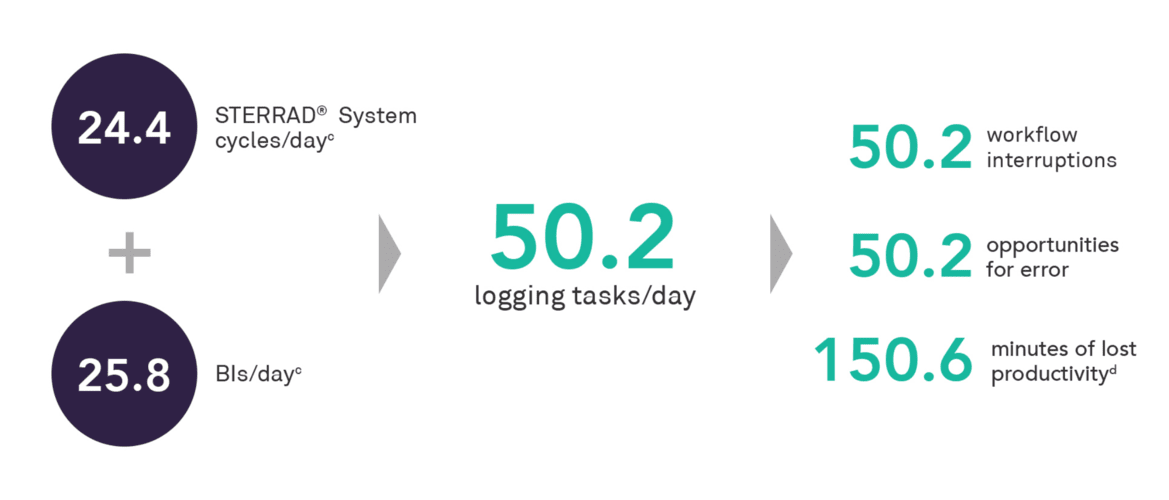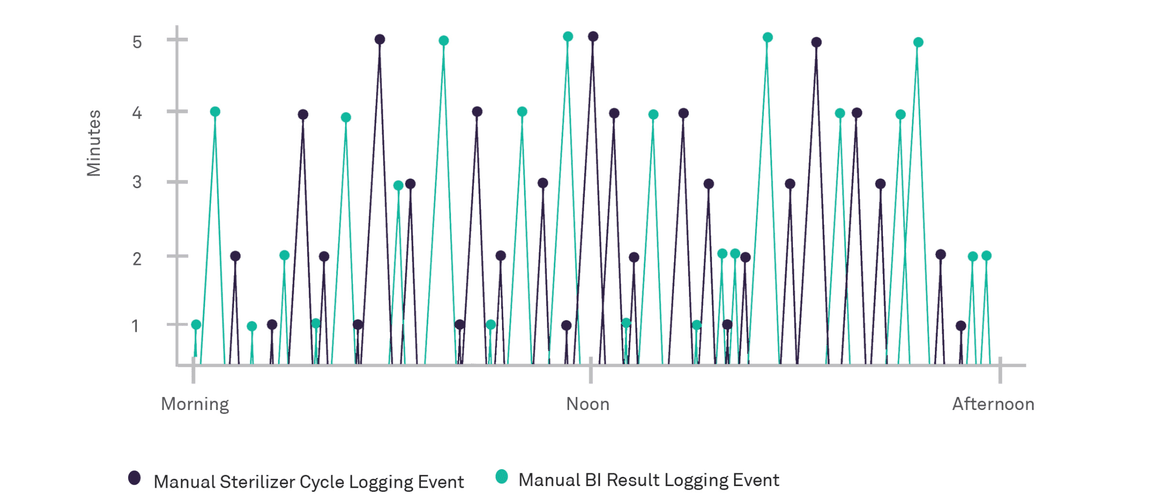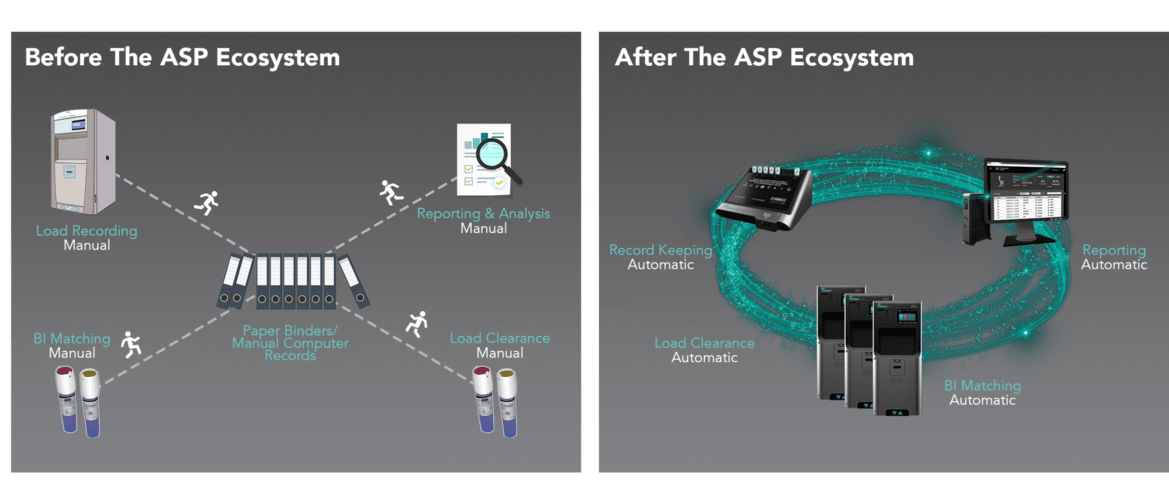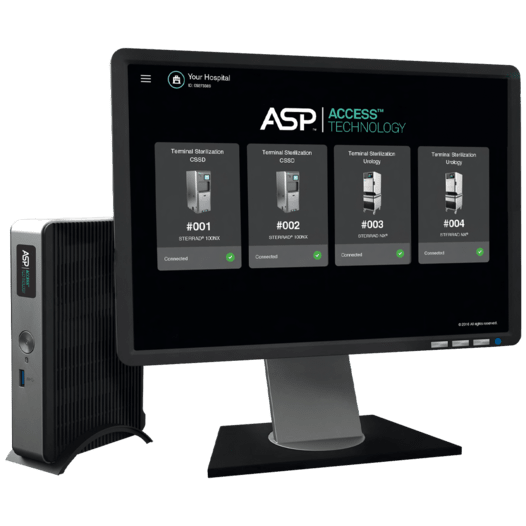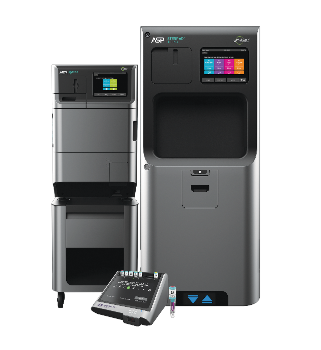In addition to decreasing distractions and interruptions associated with manual recordkeeping, after implementing the ASP Ecosystem, Sanford had another big intention for the ASP Ecosystem: standardization of its recordkeeping through automation.
In order to facilitate this standardization, the facility began by interconnecting all their instrument reprocessing systems with their instrument tracking system. This ensured that one logging method was used for reprocessing activities, netting significant savings in time and potential errors. In Figure 3 and Figure 4 below, we see how the ASP Ecosystem automates recordkeeping, removing distractions and opportunities for error.
Having their STERRAD VELOCITY™ Readers connected as part of the ASP Ecosystem has been beneficial to the institution as well. Initiating a new BI is straightforward; the STERRAD VELOCITY™ Reader allows the operator to scan a code on the vial and instantly checks to ensure the correct BI type is being used, the BI is not expired, and that the BI has never been incubated before.
The results of all BI reads are reported to the operator as “Pass” or “Fail”, all complete with pictures, to reduce the opportunity for misunderstandings or errors. Ms. Everding notes, “The STERRAD VELOCITY™ Reader literally walks you through, so that’s something that’s a huge advantage when you look at having travelers or new technicians. Again, it really takes away chances for error.”
Finally, ASP ACCESS™ Technology provides all of the STERRAD™ Sterilizer with ALLClear™ Technology and STERRAD VELOCITY™ Reader records in report form. While some of the information is also available in their instrument tracking system, ASP ACCESS™ Technology also offers notifications if any system becomes disconnected from the network through its web application. “It even sent me an email when I had unplugged the old [system] and was getting the new ones set up… it’s definitely working to its potential,” says Ms. Everding.
The ASP Ecosystem has become an important component of Sanford Bismarck, enabling it to become a rising star in the Sanford Health constellation.


